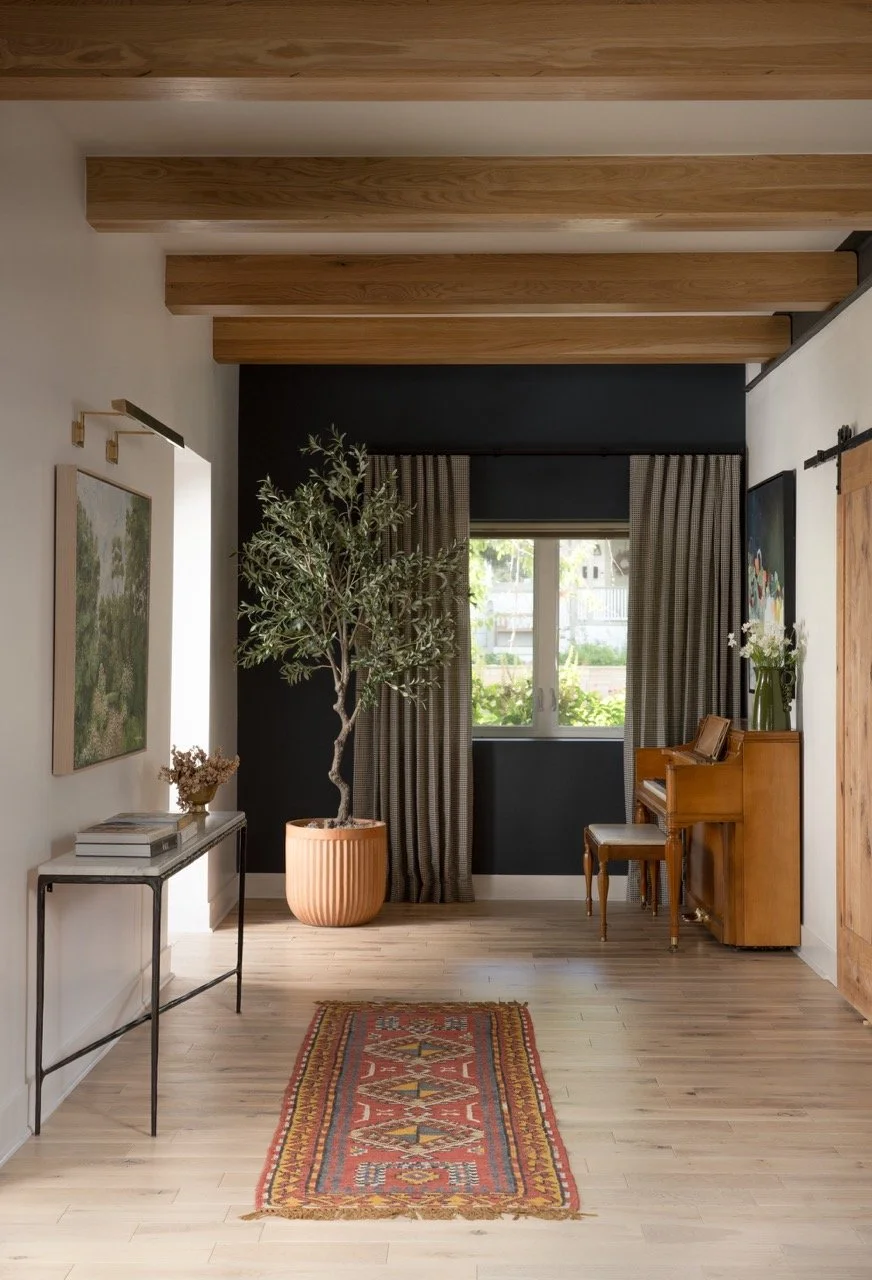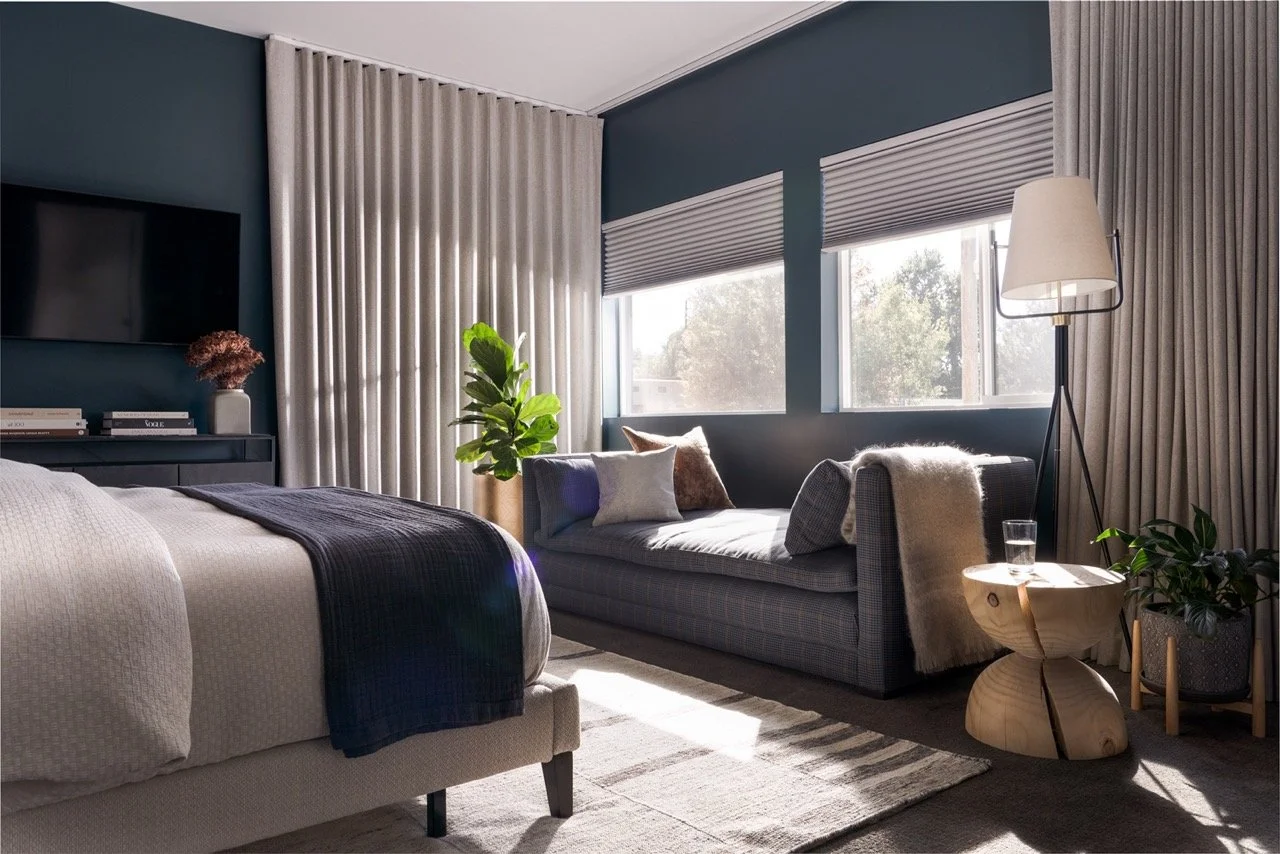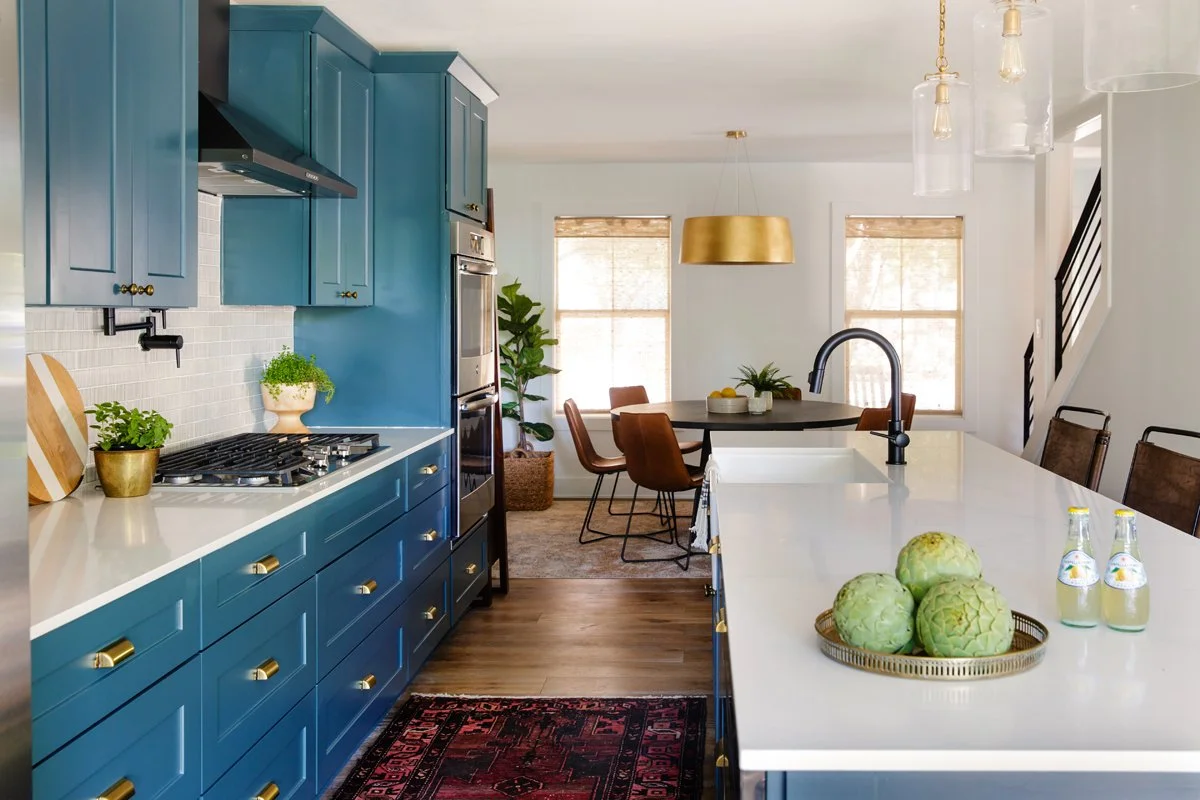How we Apply Neuroaesthetics in Interior Design
Neuroaesthetics is a scientific study of how the brain perceives and responds to beauty and artistic experiences. In interior design, applying neuroaesthetic principles means designing spaces that enhance well-being while maintaining a strong visual appeal. In case you missed it, check out Introduction to Neuroaesthetics in Interior Design.
Here are a few ways we integrate these concepts into our work.
Prioritize Natural Elements
Bringing nature indoors through biophilic design—such as natural materials, organic patterns, and interior plantings — helps lower cortisol (stress hormone) and improve mental clarity. Research shows that even images of nature can have a calming effect on the brain.
Photo: Jeff Jones Photo
Design with Symmetry
Symmetry plays a crucial role in how we perceive and experience spaces. The brain is naturally drawn to symmetrical compositions which reduces cognitive loadmaking environments feel more calming and aesthetically pleasing.
Photo: Jeff Jones Photo
Employing the “Prospect & Refuge” Theory
Humans feel most at ease in environments that provide both a clear view of their surroundings (prospect) and a sense of safety or enclosure (refuge). A window seat is a good example of incorporating both prospect and refuge together which feels secure yet expansive, promoting relaxation and focus.
Photo: Jeff Jones Photo
Optimize Lighting for Mood and Function
Layered lighting strategies, including task, ambient, and accent lighting, help create a balanced atmosphere. Access to natural light should be maximized whenever possible to align with the body’s circadian rhythms.
Photo: Suzi Brenner
Curate Color Palettes Thoughtfully
Color is one of the most emotionally charged elements of design, capable of shaping our mood, energy, and sense of place. Its impact is influenced by chroma, hue, value, and saturation—along with the quality and intensity of light, which can dramatically alter perception.
Cultural background and personal experiences also play a role in how individuals relate to different colors. That’s why we take a highly personalized approach to developing color schemes, ensuring that every selection aligns with how our clients want to feel in a space.
Whether the goal is to cultivate a sense of calm, enhance focus, or create an atmosphere of warmth and connection, every color decision is intentional—supporting both aesthetics and emotional well-being.
Photo: Susie Brenner
Leverage the Power of Texture and Materiality
Texture is one of the most powerful, yet often understated, elements in interior design. It doesn’t just add visual interest—it shapes how we physically and emotionally experience a space. Textures engage multiple senses, creating a tactile landscape that invites touch, comfort, and connection.
Soft, plush fabrics like velvet, mohair, or boucle can create a sense of intimacy and warmth, encouraging relaxation and softness in a space. These materials soften edges, absorb sound, and make a room feel more inviting and restful. On the other hand, natural materials like stone, wood, or clay offer a sense of grounding and permanence. The cool, smooth surface of marble or the organic grain of oak can evoke stability and connection to nature, bringing a sense of calm and timelessness.
Ultimately, texture is about balance. It's about understanding how different materials influence not just the look, but the feel of a space. When thoughtfully layered, textures create environments that feel cohesive, personal, and emotionally resonant—spaces that invite touch, interaction, and a deeper sense of connection.
Photo: Jeff Jones Photo
Create Harmonious Spatial Flow
The way we move through a space—and how a space guides us—has a profound impact on how we feel within it. Harmonious spatial flow isn’t just about aesthetics; it’s about designing an environment that feels intuitive, effortless, and calming. When a space is thoughtfully arranged, it encourages ease of movement, interaction, and even emotional well-being.
Clutter-free, well-organized spaces naturally contribute to mental clarity. Visual chaos can overwhelm the brain, triggering feelings of stress and distraction. But when objects have purpose and placement, and when negative space is embraced, the mind can rest. There's an unspoken sense of order that feels grounding and intentional.
Furniture placement is key. It should encourage natural pathways and invite meaningful interaction. Consider how seating arrangements foster conversation, how a dining table anchors a room, or how an open pathway leads the eye and body from one space to the next. Each piece should feel purposeful—adding to the function and flow of the space, not obstructing it.
Photo: Kathryn Krueger
Curvilinear Forms
Studies in neuroaesthetics suggest that curved shapes evoke feelings of calm and relaxation, while sharp, angular forms can trigger tension or alertness. We naturally gravitate toward spaces and objects with curves because they feel less threatening and more nurturing.
Curvilinear forms—those characterized by smooth, flowing lines and organic shapes—are deeply rooted in the natural world. From the gentle arc of a river to the contour of a leaf, curves are a constant presence in nature, and as such, they resonate with us on a primal level. Our brains are hardwired to respond positively to these forms, perceiving them as safe, approachable, and harmonious.
In interior design, curvilinear forms can soften a space, creating a sense of flow and ease. Whether through architectural features, furniture, or decorative accents, curves can transform a space from cold and rigid to warm and embracing.
Photo: Susie Brenner
By understanding the principles of neuroaesthetics, you have the power to shape your home into a sanctuary that nurtures your mind and body. Imagine a space that not only looks beautiful but also enhances relaxation, focus, and emotional well-being.
What would it feel like to step into a home that truly supports your well-being?
If you're curious about how neuroaesthetic principles can transform your home, we’d love to help! Book a Discovery Call with us today, and let’s explore how we can bring these ideas to life—one thoughtful design choice at a time.








